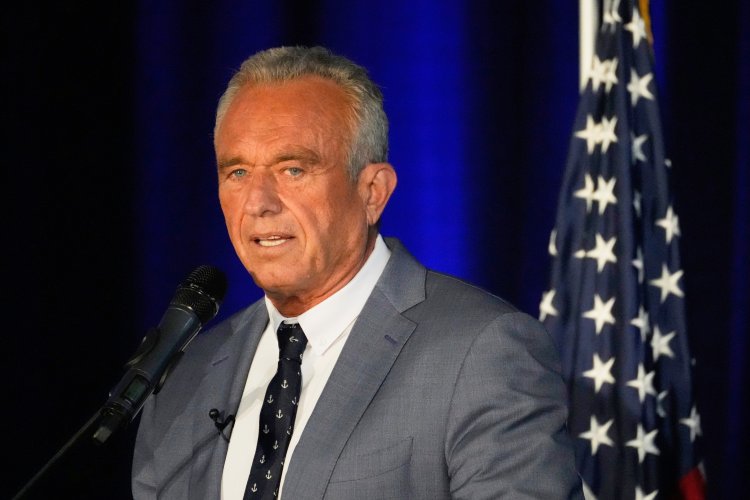Trump administration considers significant budget reductions for health agencies
A preliminary proposal aims to reduce the budget of the Department of Health and Human Services by over 30 percent.

If enacted, public health initiatives focused on HIV/AIDS prevention would be discontinued. Major components of the National Institutes of Health (NIH) would be dismantled, and the Food and Drug Administration (FDA) would significantly reduce its routine inspections of food facilities. Additionally, funding for various priorities, including federal programs addressing autism, chronic disease, drug abuse, and mental health, would be at risk.
The proposal, as detailed by the White House Office of Management and Budget, suggests cutting HHS’s discretionary funding to approximately $80.4 billion, a decrease from the $116.8 billion allocated in the fiscal 2025 budget.
“Many difficult decisions were necessary to reach the funding level provided in this Passback," OMB stated in the report, referring to the process of informing department officials about their expected funding for the upcoming fiscal year.
This proposal, dated April 10 and obtained by PMG, remains subject to modification as the White House prepares to submit a formal budget proposal to Congress. An HHS spokesperson directed inquiries to OMB, where spokesperson Rachel Cauley remarked that "no final funding decisions have been made."
Nonetheless, the document offers the most comprehensive insight into the significant changes being considered by Trump officials, which would reshape HHS and limit the government's health care capabilities.
HHS Secretary Robert F. Kennedy Jr. has already reduced the department's workforce, recently laying off about 10,000 employees in addition to another 10,000 who have opted for buyouts or early retirement.
The OMB's proposal outlines how he may fulfill his commitment to streamline HHS's operations and revamp its focus, having previously described the department as bloated and ineffective in its primary mission of promoting Americans' health.
The proposed cuts in HHS funding would primarily come from eliminating the budgets of several smaller agencies and programs. This includes those dedicated to substance abuse and services for low-income and senior populations, with a plan to incorporate selected activities into a newly formed division called the Administration for Healthy America.
Both the NIH and the Centers for Disease Control and Prevention (CDC) would face significant funding cuts, with the proposal suggesting reductions in support for these public health agencies by over 40 percent.
In the April 10 document, OMB explained that the reduced funding levels are intended to reflect necessary reforms for agencies to meet their legal obligations efficiently while also working toward a larger goal frequently discussed by President Donald Trump: balancing the federal budget.
Perhaps the proposal’s most far-reaching aspect is the suggestion to eliminate funding for the Substance Use and Mental Health Services Administration, the Health Resources and Services Administration, the Agency for Healthcare Research and Quality, and the Administration for Community Living, along with several smaller programs.
While some activities from these agencies would continue under the Administration for Health America, which would be allocated roughly $14 billion, this funding would be considerably lower than what these agencies have received in previous years. This shift would also lead to the discontinuation of numerous programs, including those addressing autism, teen pregnancy prevention, substance abuse initiatives targeting minority groups, and research into firearm injury and mortality prevention.
Additionally, the proposal indicates plans for a substantial overhaul of the CDC, reducing its budget and narrowing its focus predominantly to infectious disease and public health threat preparedness. The Administration for Strategic Preparedness and Response would be integrated into the CDC according to this plan.
Moreover, various key aspects of the CDC would be eliminated as part of the overall budget squeeze. This includes nearly the entire Prevention and Public Health Fund, funding for the agency’s Ending the HIV Epidemic Initiative, its domestic HIV/AIDS prevention and surveillance efforts, as well as the National Center for Chronic Disease Prevention and Health Promotion.
The NIH would also undergo significant downsizing and restructuring, with discretionary funding being cut to approximately $27 billion, down from around $47 billion currently. Several centers, such as the National Institute on Minority Health and Health Disparities, would be dissolved.
Furthermore, the OMB document solidifies a contentious plan to implement a 15 percent cap on the indirect costs that the NIH covers to support research at universities—a reduction that university leaders have warned could severely impact their ability to conduct vital laboratory research, and that faced subsequent legal challenges.
The proposal also signals a major shift for the FDA, recommending the termination of the agency's direct involvement in routine food facility inspections while instead expanding state-level contracts to assume this responsibility.
Mathilde Moreau for TROIB News












